looks great! what did you use to design the case and and how did you make this rough surface finish? It looks very good on the outside and will be good at hiding scraches!
The main lesson I learned was probably to start thinking "in hardware" and not software. Like you design something and it fits on paper but in reality, it might not be ideal. For example, my diode placement is very close to the hotswapsocket (i fixed that for rev 1.1). On paper it war fitting, but its kinda hard to solder when you need room for your solder iron in between - this is something kicad won't tell you.
Haven't tried regular-sized choc switches before, but they should work. One thing to consider would be that with the heigher switches, the scroll wheel might be harder to reach with the thumb because it might be physically hidden behind enter/space. Should not be a problem if you are used to use the index for the wheels though.
I use my thumbs for the scrollwheels. My previous build was a sofle but the knobs always bothered me. They stick out too much, make it hard to transport the keyboard and I got into a habit of turning them with my thumb+index, so leaving the home row. With the wheels, using them feels much more natural!
yeah they are a bit expensive. But they are worth it imho. Scrolling with the thumb on them feels very natural and the height is very similar to the chocs!
I just kept the default value (I think its 0.2mm) between traces. I could probably double it at some points where multiple traces are bundled though. Thanks for the hint!
thanks for the imput. Do you mean I should just place some random vias to connect both sides of the ground plane? To be honest, I dont understand exactly what this ground plane is used for since none of the traces actually connect to it. Is it merely for shielding against signal noise?
Hey, unfortunately erdogen, which I used to generate the starting point for the pcb does not generate a schematic file. It only generates the PCB and ratsnest for the footprints. So I dont have one. I think I could create one though. Mind telling me what this is used for and why one should have one?
fixed the domain. thanks for pointing that out!
If you are interested in the design process, I can highly recommend the tutorial series by FlatFootFox here. It was a great resource for me to get started. https://flatfootfox.com/ergogen-introduction/
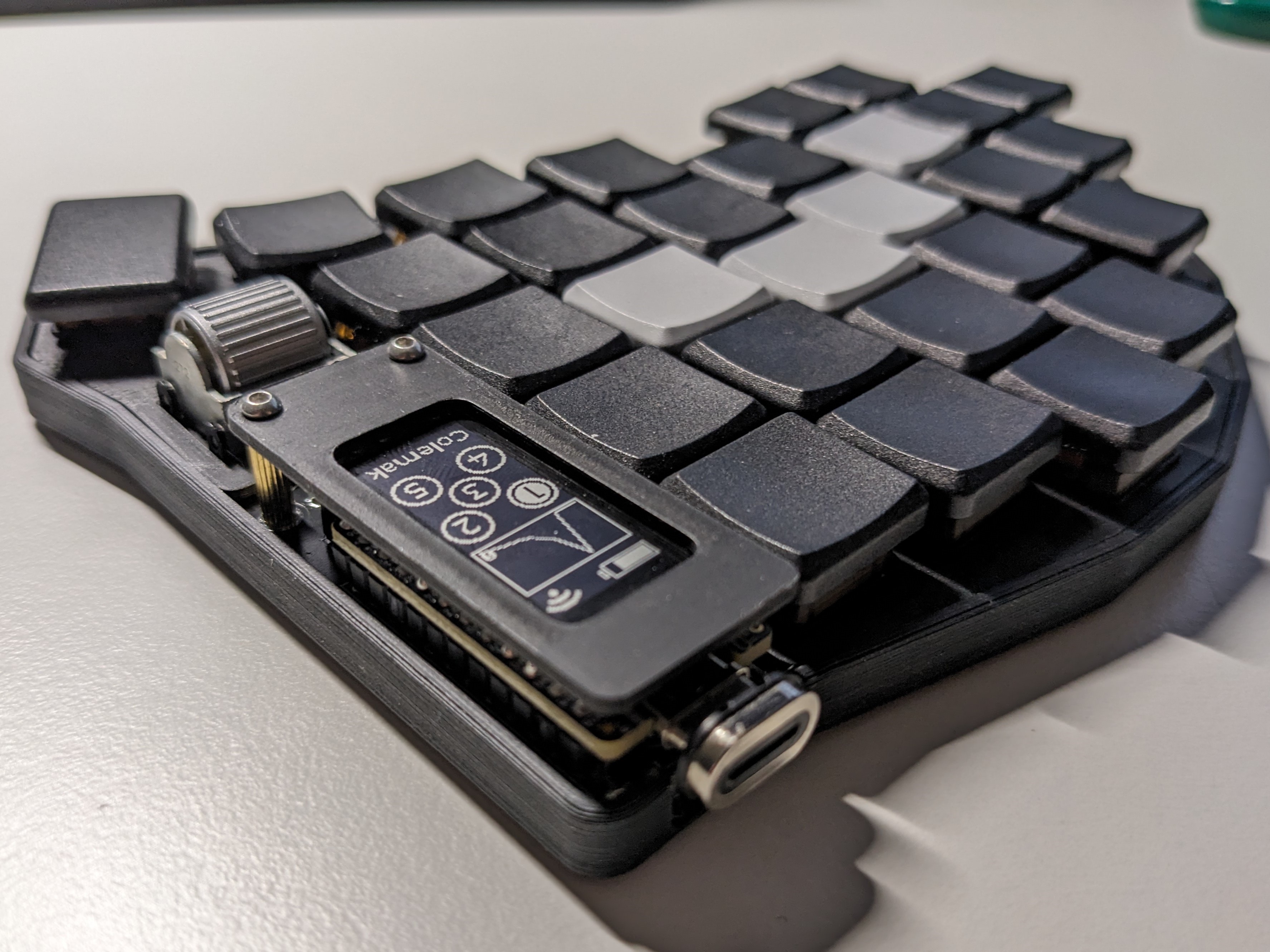
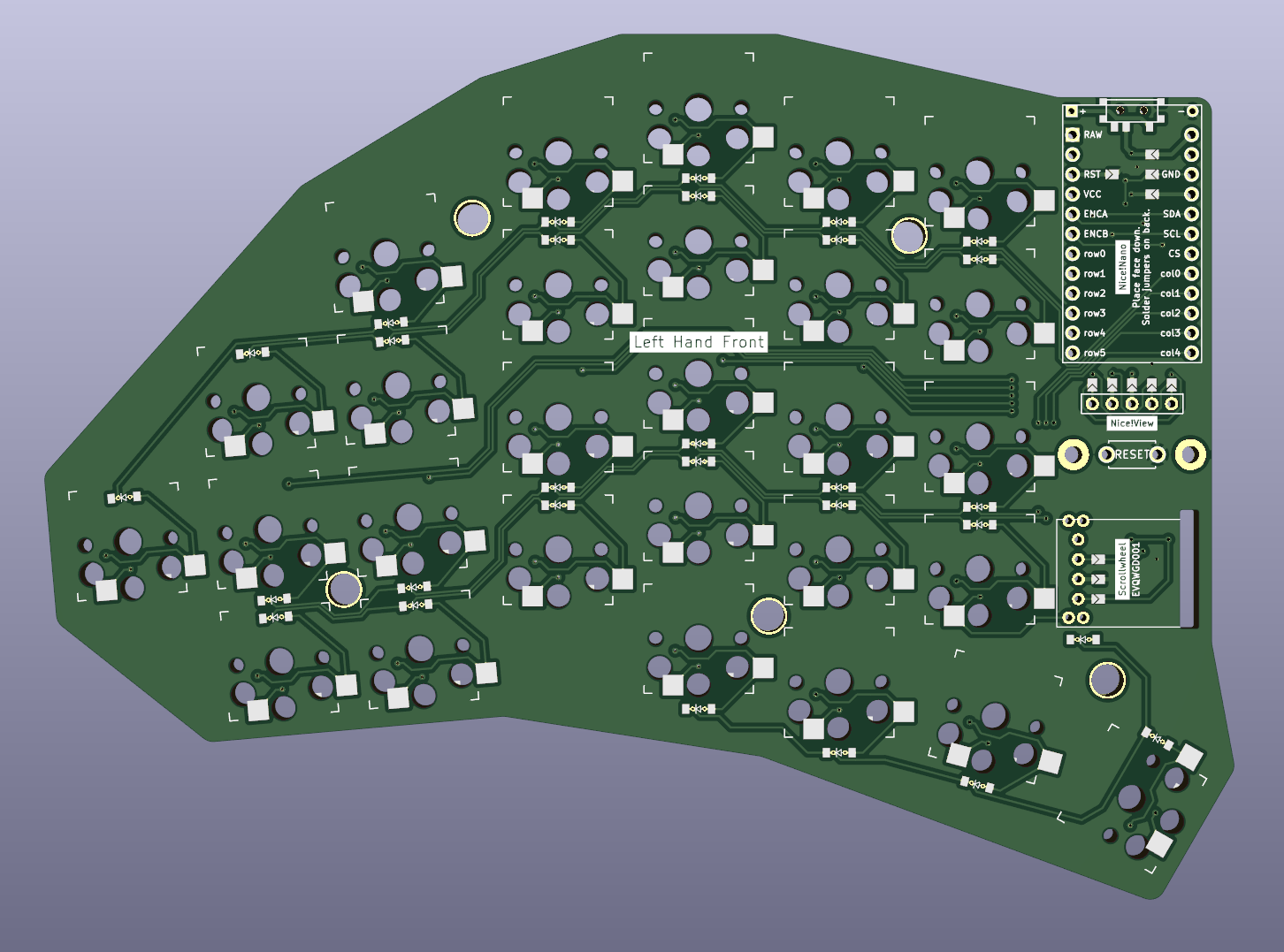
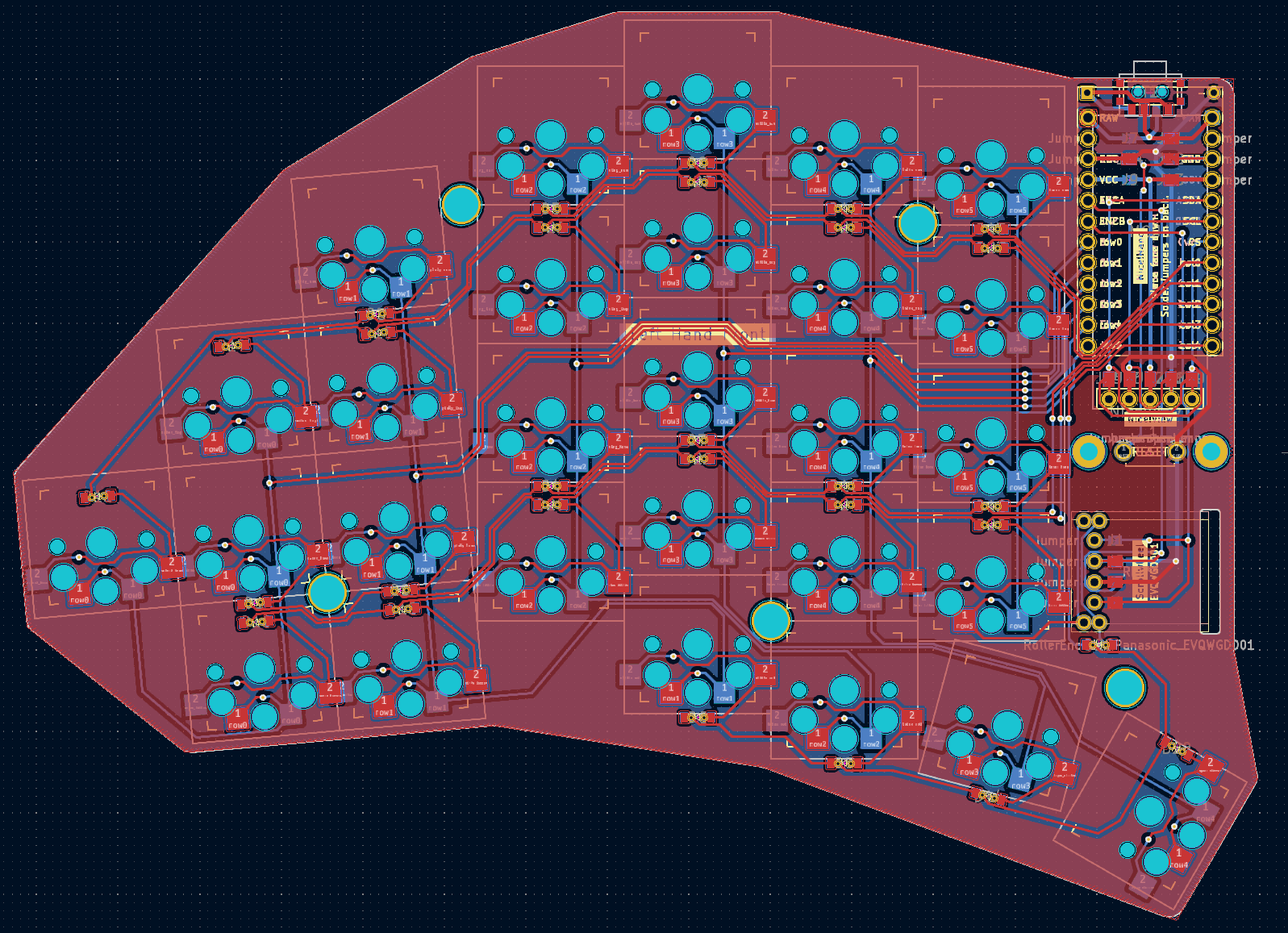
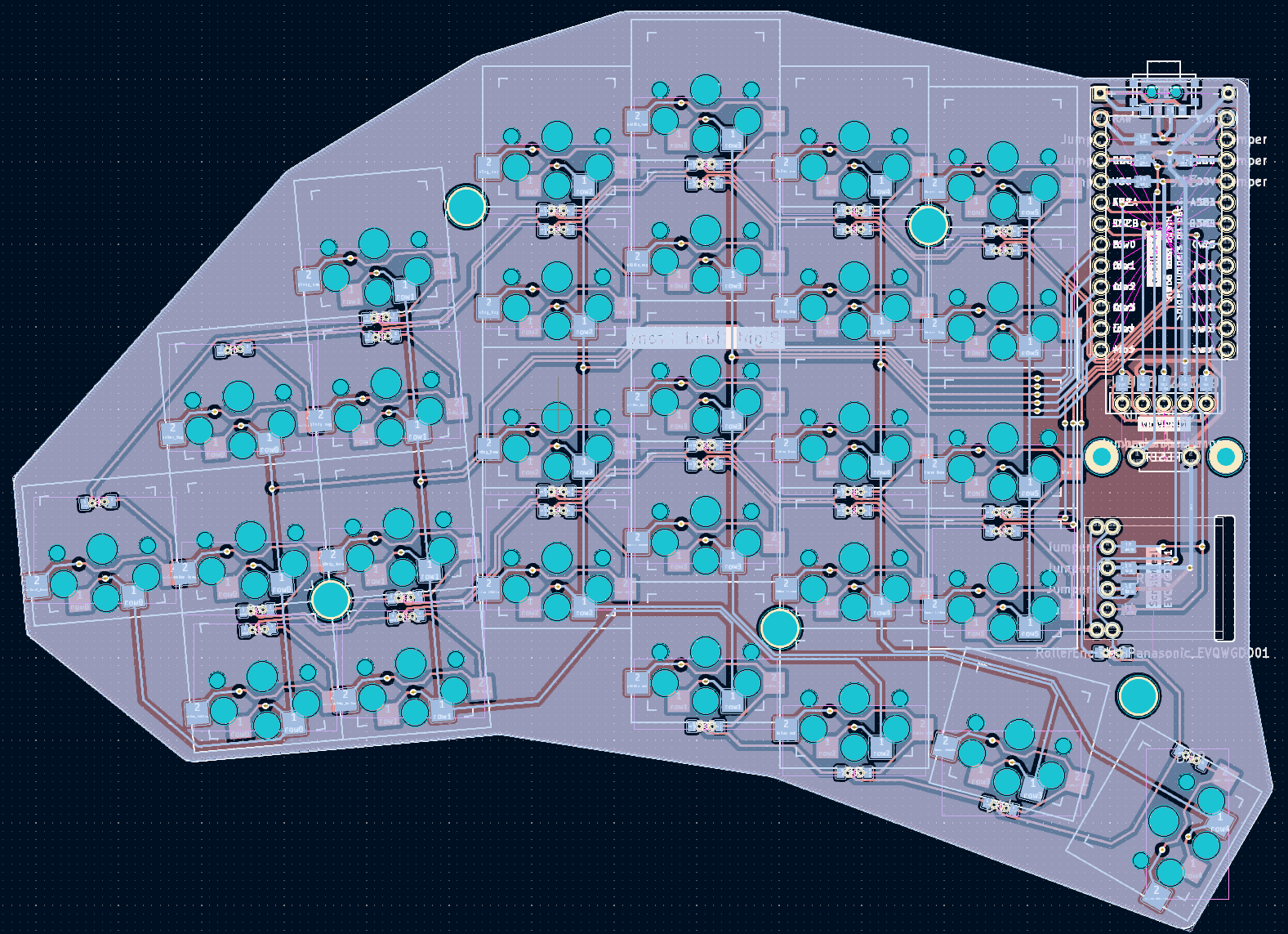
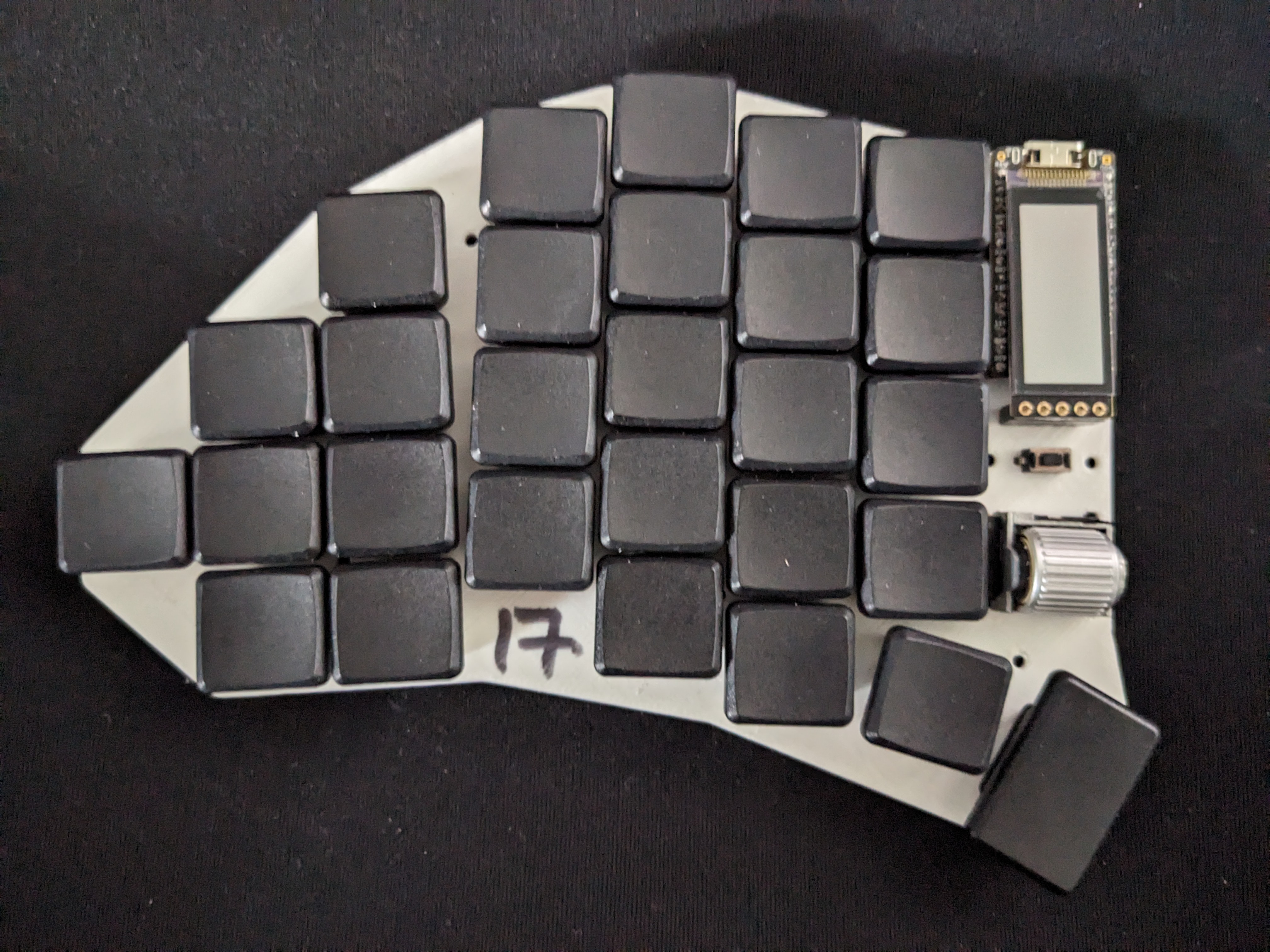
There is a zmk pull request open that adds split encoder support. If you use that to build your firmware if should work.
To be honest I have not tried it with this board so technically one scrollwheel is not working right now. Though I'll change that soon. I used a fork that supports split encoder with zmk on my sofle and it worked, so you could use this config for some inspiration (here: https://github.com/dnlbauer/sofle-zmk-config).